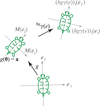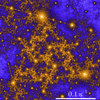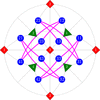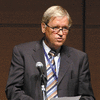issue contents
January 2024 issue

Cover illustration: In this issue, Matinyan et al. [Acta Cryst. (2024), A80, 1–17] extensively review the application of deep learning and artificial intelligence (AI) in protein crystallography. The cover image was generated by DALL·E in response to the prompt `A depiction of a protein crystal structure surrounded by abstract representations of digital data and AI algorithms, highlighting the data-driven approach in protein crystallography'.
advances
lead articles
 access
accessfoundations
crystal lattices
research papers
 access
access access
accessobituaries


 journal menu
journal menu

































